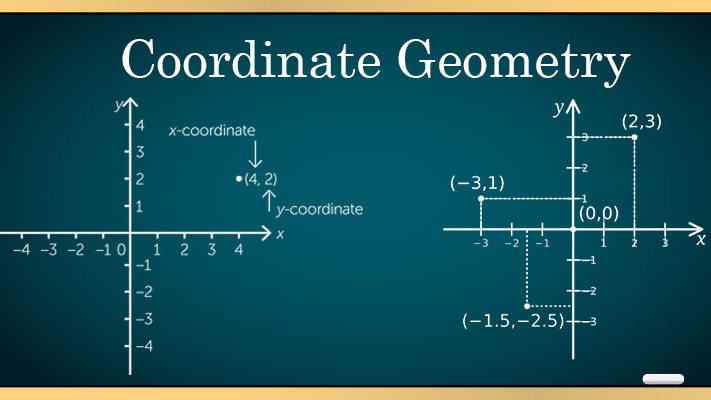Coordinate Geometry Concept: Measuring the Length Between Two Coordinates

The coordinate planes comprise the horizontal x-axis and the vertical y-axis. Both the axis intersects at the origin (0,0). The plane is divided into four quadrants. The points are represented in the form of ordinates (x, y) on the plane. The distance between two points is the length between the two coordinates of the same plane. There is an appropriate relation to knowing the same on the coordinate (XY) plane.
Coordinate Geometry Concept: Measuring the Length Between Two Coordinates
Euclidean conceptual geometry defines the coordinates as the point location positioned on the plane. They are termed as abscissa for x-coordinate and ordinate for the y-coordinate. The value thus known is the location of any point on the respective plane.
Understanding the concept of coordinates of a point
Distance between two points
Now, if the points are P (x1, y1) and Q (x2, y2) then their distance can be measured by the relation
PQ= √ (x2-x1) ^2 + (y1-y1) ^2
Where it is assumed that the plane has two coordinates P and Q whose distance has to be calculated. The coordinates of the points can be found looking for their distance from the x-axis and y-axis.
If the coordinates come out to be (x1, y1) for P and (x2,y2) for Q then the points are located in the first itself. Then the distance between the two points is given by the above-mentioned formula.
Similarly, if the distance of any point on the plane is to be calculated from the origin, i.e., (0,0) in the XY plane then the relation becomes OP= √x^2+y^2, where O is the origin and P (x, y) represents the point away from the origin.
Using Pythagorean theorem to find out the distance between the two points
Let’s understand this with the help of an illustration.
Assuming that a girl moves 30 meters towards the north before turning to the east where she goes 40 metres ahead. The problem is to find out the displacement or the shortest distance between the two points.
Solution: Now, analysis of the question brings us to the conclusion that if A is the initial position of the girl then she moves 30m to reach B and from there she took a turn towards the east to make a right-angled triangle having the final location say C. Thus, AB= 30m and BC=40m.
The total distance travelled by the girl becomes 30+40= 70m but the question calls for finding out the displacement or the shortest distance i.e., AC. Here, we will apply Pythagoras theorem which says,
Hypotenuse^2= Base^2+ Perpendicular^2
AC^2= AB^2+BC^2
AC^2= 30^2+40^2
Then AC= √900+1600
AC=√2500= 50 m
Thus, 50m is the shortest distance between the initial and the final position of the girl. Similarly, in the XY plane also one can easily calculate the same (distance) with the help of the Pythagoras theorem of right triangles.
Derivation of the distance formula
If S and T that are the points on the x-axis are the endpoints of PS and QT which are parallel to each other respectively then it is clear that both the segments are equal in length.
So, coordinates of S are (x1,0) and those of T is (x2,0).
This implies that OS=x1 and OT=x2
Thus, ST= x2-x1 which is PR
In the same way, PS=PT
QR= y2-y1
Applying the Pythagoras theorem
We get, PQ= √ (x2-x1) ^2 + (y1-y1) ^2 which is called the distance formula.
Cuemath has explained this derivation in an easy way supported with pictorial representation of the figure in the plane. The app describes the concept and all its subparts with the solved examples to enhance the understanding of the concept.
By using the distance formula one can easily find the distance between the two points in the coordinate plane as well as the Cartesian plane. In any 3-d plane, the relation transforms to
Distance formula=√(x2-x1) ^2 + (y1-y1) ^2+ (z2-z1) ^2
It is to be noted that the order of points in the relation can be switched.
To know more about the same topic download Cuemath.
Also Read: Data Science 101 and its Importance for Businesses

